Table of Contents
ToggleIn a world where technology evolves faster than a cat meme goes viral, many businesses find themselves stuck with legacy systems that could use a serious upgrade. Enter the Retrofit Legacy WebBizMagnet PLC Python Library. This powerhouse solution is not just a fancy tool: it’s a lifeline for companies that still cling to aging technology. Ready to discover how to breathe new life into your legacy systems while keeping your cool and your budget intact? Let’s immerse, and promise no coding jargon will be left unexplained.
Understanding Legacy Systems

Legacy systems are those old-school software solutions that can be as nostalgic as a cassette tape yet often just as frustrating. Many companies rely on these systems for their everyday operations, and while they served their purpose wonderfully back in the day, they can now feel like an anchor weighing businesses down.
These systems typically run on outdated technology, which can create compatibility issues with modern applications. Often, they lack user-friendly features and can be challenging to maintain. This can lead to high operational costs and reduced efficiency. In essence, legacy systems represent a familiar yet limiting environment, where innovation takes a backseat. Sound familiar?
Importance of Retrofitting
Retrofitting isn’t just a fancy buzzword: it’s a strategic necessity in today’s fast-paced business landscape. When organizations retrofit their legacy systems, especially with a robust tool like the WebBizMagnet PLC Python library, they unlock several advantages.
Firstly, retrofitting enhances flexibility. It allows for the integration of new features without having to discard the existing system entirely. Also, it improves performance and security, significantly reducing the chances of data breaches or operational glitches. Besides, this approach often leads to cost savings in the long run. Who wouldn’t want to save a buck while boosting productivity? By prioritizing retrofitting, businesses can transform their dated systems into efficient, modern platforms without starting from scratch.
Overview of WebBizMagnet PLC
WebBizMagnet PLC is not just any run-of-the-mill software solution: it’s a comprehensive platform that revolutionizes how companies manage workflows and business processes. Designed with user needs in mind, it provides tools for automation, data management, and reporting, all while ensuring seamless integration with existing systems.
What sets WebBizMagnet apart is its ability to adapt. It easily accommodates changing business needs, allowing teams to focus on what matters most. When paired with Python, renowned for its readability and versatility, it supercharges the capabilities of legacy systems, breathing new life into old software. The combination is a game-changer for companies eager to enhance their technological arsenal.
Integrating Python into Legacy Systems
Python has skyrocketed in popularity for numerous valid reasons: its simplicity and power make it an ideal companion for legacy systems. Integrating Python into existing setups does not merely modernize legacy software but also enhances the overall technological framework of an organization.
Adding Python capabilities can introduce intuitive scripting for automation and data processing. Also, Python’s extensive libraries and community support can eliminate the headaches associated with conventional programming, allowing businesses to operate smoothly and efficiently. In short, blending Python with legacy systems is akin to giving an ancient relic a futuristic makeover.
Steps to Retrofit the WebBizMagnet PLC Library
Successfully retrofitting the WebBizMagnet PLC library is not an insurmountable challenge. Following a structured approach simplifies the process:
1. Assess the Current System
Understanding the capability of the existing software is crucial. What works? What limits the performance?
2. Define Requirements
Identify which modern functionalities need integration, focusing on what will deliver the most value.
3. Plan the Transition
Develop a roadmap detailing how Python will be integrated, including timeline and team responsibilities.
4. Prototype and Test
Before a full roll-out, ensure the new features function well by testing them in a controlled environment.
5. Carry out
Go live with a gradual rollout, ensuring support is available for troubleshooting.
6. Monitor and Optimize
Post-implementation, continuously monitor performance and gather feedback for future enhancements.
Best Practices for Successful Retrofitting
The retrofitting process can be smooth sailing if organizations adhere to some best practices:
- Involve Key Stakeholders Early: Getting input from users and decision-makers ensures the new features meet their needs.
- Documentation is Key: Keep detailed records of the process, allowing future teams to understand the enhancements made.
- Regular Training: Ensure your team is well-versed in utilizing new functionalities and understands the benefits.
- Iterative Improvements: Stay flexible to feedback and be prepared to make adjustments post-implementation.
By following these guidelines, companies can greatly enhance the chances of a successful retrofitting project while minimizing challenges.





